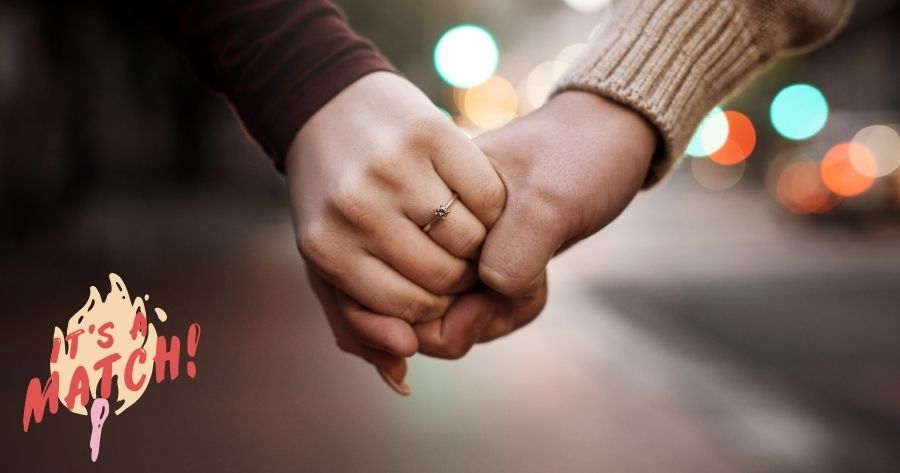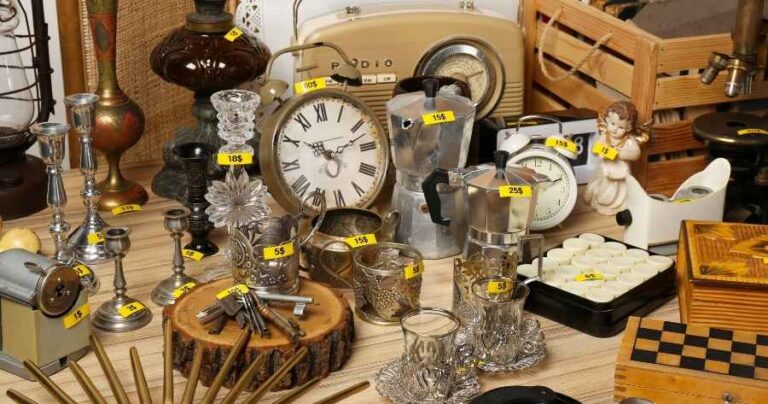
Why Your Age Influences the Dating App You Choose
Dating apps have revolutionized the way people meet, but the truth is, not all apps are created equal for every age group. Just like fashion trends or music preferences, dating habits evolve as we move through different stages of life.
A 22-year-old might be drawn to the thrill of swiping, trying out multiple matches in a week, while a 45-year-old might want a more focused, compatibility-driven platform that connects them with people sharing long-term goals. Seniors, on the other hand, may prioritize safety, familiarity, and companionship over flashy features.
The right dating app doesn’t just match you with potential partners — it matches your lifestyle, communication style, and relationship expectations. Choosing the wrong one can leave you frustrated, while the right one can open the door to meaningful connections in weeks or even days.
Let’s explore the top dating apps for each age group and understand why they work so well for different stages of life.

Dating Apps for Young Adults (18–24)
Young adults are often tech-savvy, adventurous, and curious about new experiences. They tend to embrace a variety of dating goals — from casual flings and party dates to serious relationships that start in college or early careers.
1. Tinder – The Fast-Paced Swiping Giant
Tinder remains the most popular choice for the 18–24 age range. With its swipe-right for yes, swipe-left for no mechanism, it has redefined casual dating. Young adults enjoy quick decisions, large dating pools, and the possibility of meeting people nearby in real time. It’s easy to use, and even the free version offers high visibility. Tinder for young adults is perfect for those who want excitement and flexibility.
Example scenario: A 20-year-old university student might meet classmates or locals for coffee within a day of downloading the app.
2. Bumble – Where Women Make the First Move
Bumble’s main difference is that only women can send the first message in heterosexual matches. Gives women control and encourages respectful conversations.
- Bonus features: “BFF” mode for making friends and “Bizz” for networking.
- User appeal: Men appreciate that matches are more intentional and less spammy.
3. Hinge – Designed to Be Deleted
Hinge focuses on meaningful conversations through prompts like “Two truths and a lie” or “I know the best spot in town for…”.
- Why it works: Appeals to young adults ready for something more substantial than quick swipes.
- Conversation starter: You can like and comment on specific parts of a profile, making your message stand out.
Dating Apps for Millennials (25–35)
Millennials are often balancing careers, social lives, and long-term relationship goals. They want apps that save time and focus on quality matches.
4. OkCupid – Compatibility Through Questions
OkCupid pairs users through question-based algorithms that measure values and beliefs. Millennials who care about politics, religion, lifestyle choices, and identity appreciate OkCupid’s granular filters. The app is inclusive of different orientations and gender identities, making it a strong choice for diverse users seeking thoughtful matches. Perfect for millennials who want both casual and serious options, but with a compatibility edge.
- Inclusivity factor: Welcomes all orientations and identities.
- Example: A 29-year-old marketing professional can filter matches by political views, diet, or relationship goals.
5. Coffee Meets Bagel – Fewer, Better Matches
This app sends curated matches daily, encouraging deeper engagement. Coffee Meets Bagel curates a small set of matches daily based on mutual interests and preferences. For busy professionals who don’t want to infinite-swipe, this app reduces decision fatigue and encourages messaging. The limited-match model nudges users to engage rather than endlessly browse, improving response rates and depth of conversation.
- Why it works: Busy millennials don’t have time to scroll endlessly. This “slow dating” model increases focus and connection.
- User benefit: Promotes conversation instead of mindless swiping.
6. Match.com – The Time-Tested Option
Match.com has been around for decades and still draws serious daters. Match.com is one of the oldest platforms and still attracts people serious about long-term relationships. With advanced filters and a large membership base, Match works well for millennials who want a traditional approach to dating with detailed profiles and search tools. Paid features increase visibility and are worth considering if you’re committed to finding a partner.
- Why it works: Large, diverse user base with many professionals in their late 20s and early 30s.
- Added bonus: Strong search filters help find matches that align with specific lifestyles.
Dating Apps for Middle-Aged Singles (36–50)
This age group often values stability, shared life experiences, and compatible goals. Many are dating after divorce or major life changes, making trust and compatibility essential.
7. eHarmony – Serious Relationships Only
eHarmony is famous for its in-depth compatibility quiz and guided matches. It uses a comprehensive compatibility questionnaire to match people on deep psychological metrics. For singles in their late 30s and 40s who want stable, long-term relationships, eHarmony provides structured matches and guided communication tools. Its onboarding process is thorough, which tends to filter for people who are serious about commitment. eHarmony is the go-to dating app for middle-aged singles seeking marriage.
- Why it works: Ideal for those who are done with casual dating and ready for commitment.
- Success stats: Known for leading to thousands of marriages.
8. Plenty of Fish (POF) – Large, Active User Base
POF offers a massive user base and a mix of casual and serious daters. It is flexible, with both free and paid features, and provides robust search options. For middle-aged daters who want many choices and the ability to sort profiles extensively, POF remains a practical option.
- Why it works: The wide range of users increases the odds of finding someone with similar values.
- Best feature: Advanced filters for things like relationship type, religion, and habits.
9. EliteSingles – For Educated Professionals
EliteSingles targets educated professionals seeking partners with similar career and educational backgrounds. For middle-aged singles who prioritize intellectual compatibility and stable lifestyles, EliteSingles’ onboarding and profile requirements help surface like-minded matches.
- Why it works: Perfect for middle-aged singles who want partners with similar educational and career backgrounds.
- Security: Strict verification to keep fake profiles out.
Dating Apps for Seniors (50+)
Older adults usually prioritize simplicity, safety, and companionship. Apps with easy interfaces, strong verification, and local events are especially appealing.
10. OurTime – Tailored for Over 50
OurTime is built for people aged 50+, with features that cater to ease of use. OurTime focuses on singles aged 50 and older and emphasizes companionship, activities, and straightforward profiles. The interface is simple and less cluttered than mainstream apps, making it accessible for users who are less comfortable with complex features. OurTime also highlights events and offline meet-ups for seniors seeking social connection.
- Why it works: Focus on companionship, simple layout, and in-person meet-up events.
- Example: A 62-year-old widow may find a travel partner or someone to share hobbies with.
11. SilverSingles – Compatibility and Comfort
SilverSingles uses a personality test to match users based on temperament and lifestyle. The app’s design prioritizes clarity and ease of use, and its matching process is aimed at intentional, late-life relationships. Seniors who want to avoid superficial swiping can benefit from its thoughtful approach.
- Why it works: Matches are more intentional, avoiding time wasted on incompatible profiles.
- Security: Dedicated customer care team for user safety.
12. Lumen (Now Part of Bumble)
Originally aimed at over-50 dating, Lumen merged into Bumble, but the focus on mature dating preferences remains. Lumen was built for older adults seeking mature dating experiences; its focus on respectful conversation and photo verification resonated with older users. After Lumen’s integration with larger platforms like Bumble, many of its features persist in age-friendly modes. This gives seniors access to modern app interfaces with added maturity filters.
- Why it works: Older adults can still enjoy Bumble’s interface while finding age-appropriate matches.
How to Choose the Right Dating App for Your Age Group
1. Clarify Your Goals
Decide whether you want casual fun, a serious relationship, or friendship. Different apps excel in different areas. Be honest about what you want: casual dating, a serious relationship, friendship, or networking. Your goal will narrow the list of suitable apps quickly.
2. Check the App’s User Demographics
Research which apps have strong user bases in your age bracket. Look for features like profile verification, detailed filters, and communication tools that suit your comfort level. Look for platforms where most users are within your preferred age range. For example, Tinder skews younger, while OurTime skews older.
3. Consider Ease of Use
If you prefer simple navigation, choose apps with cleaner interfaces and fewer required steps. Older adults should prioritize large fonts, clear buttons, and straightforward messaging. If you’re not comfortable with tech-heavy features, choose a straightforward app with clear navigation.
4. Review Safety Features
Choose apps that offer photo verification, reporting tools, and moderation. Read reviews for how quickly platforms respond to abuse reports. Safety should be non-negotiable for all age groups.
5. Weigh Free vs. Paid Options
Free apps let you try the waters; paid tiers often provide meaningful boosts like profile boosts, seen receipts, and advanced filters. If the app’s goal aligns with your priorities, a subscription can be a cost-effective shortcut. Free apps are great to start with, but premium features often improve match quality and save time.
Tips for Dating Success at Any Age
- Use High-Quality Photos: Choose clear, recent pictures that show your face and a variety of activities. Profiles with photos of hobbies, travel, or pets tell a fuller story and attract like-minded people. Clear, recent images that reflect your personality attract more serious matches.
- Write a Compelling Bio: Avoid generic phrases. Mention a few tangible interests and what you’re looking for. Specificity increases both searchability and authentic matches. Include hobbies, values, and what you’re looking for. Avoid clichés like “I love to laugh.”
- Engage Respectfully: Openers that ask about a person’s interest or profile detail generate better responses than “Hey” or “You’re cute.” Ask about favorite local spots, hobbies, or recent reads. Polite, engaging messages stand out. Avoid copy-paste introductions.
- Be Honest: . Misrepresenting your age, interests, or appearance damages trust.
- Stay Patient: Regular activity increases visibility and improves algorithmic matchmaking. Consistency in messaging and engagement usually leads to better outcomes. Good matches take time. Don’t get discouraged after a few bad dates.
- Meet Safely: Choose public places, tell a friend where you’ll be, and never share financial info. Move slowly with personal details, share your plans with a friend, and use app messaging until you feel comfortable
Troubleshooting Common Frustrations
When Matches Stall
If conversations die, try a different opener or reference something specific from their profile. If a pattern emerges, refine your profile or photo selection.
If You Get Burned
Take a break. Evaluate what you want, update your profile, and return with fresh intent. Dating fatigue is common — stepping away can help reset expectations.
If You’re Getting the Wrong Age Range
Adjust your filters and be explicit about age preferences in your bio. Some apps allow age ranges; narrow them to your ideal bracket.
Practical Strategies by Age Group
For Young Adults (18–24): Build social proof and be smart about volume. Post photos showing social life, hobbies, and a clear headshot. Rotate pictures to stay visible. When you match, ask about mutual friends or favorite local spots. Protect personal contact details until trust is built; move to an audio or video call for better rapport. Use profile integrations like Instagram or Spotify to share personality and conversation starters.
For Millennials (25–35): Prioritize time-efficient matching and intentional messaging. Use curated apps or daily-match features to reduce scrolling. State weekend availability and interests in your bio to filter compatible people. Open with a profile-specific question such as “What’s your favorite local coffee spot?” — this invites description and increases reply rates. Consider a premium subscription briefly to test visibility improvements.
For Middle-Aged Singles (36–50): Emphasize stability and clear dealbreakers. Be upfront about family status, relocation willingness, and long-term goals. Choose platforms with robust filters and longer bios so you can explain values and routines. Photo selection should balance a friendly headshot with hobby shots and a modest social photo. For a first meeting, prefer daytime coffee or a short activity to reduce pressure.
For Seniors (50+): Prioritize safety and shared interests. Choose senior-focused apps with simplified navigation and responsive support. Use photos that reflect hobbies like gardening, travel, or volunteering. Conversation starters can reference life-stage topics like retirement plans, favorite travel memories, or community activities. Attend app-hosted events or group meetups to meet people in structured, safer contexts.
Effective Message Starters
- Reference the profile: “I love that photo at the coast — where was that taken?”
- Ask a low-stakes opinion: “Pancakes or waffles — which side are you on?”
- Offer a short anecdote: “I once learned to salsa dance in a weekend — what’s a skill you picked up unexpectedly?”
Profile Checklist
- Headshot: Clear, well-lit photo smiling at the camera.
- Variety: One full-body, one activity or hobby image, one social shot.
- Bio: 30–70 words with specifics and a stated dating intention.
- Privacy: Never include home address or financial information.
- Verification: Use platforms that verify photos or identity.
Conclusion: Love Has No Age Limit
Whether you’re a college student swiping on Tinder, a career-driven millennial on OkCupid, a divorced 45-year-old on eHarmony, or a retired senior on OurTime, there’s a dating app designed for you.
Your age doesn’t restrict your ability to find love — it simply helps you choose the platform where you’ll feel most comfortable and understood. The right dating app matches your goals, life stage, and personality, making your journey to love not just possible, but enjoyable.
Online dating is not just about finding a partner; it’s about finding the right partner, at the right time, in the right way. No matter your age, love can still be a swipe, click, or message away.





